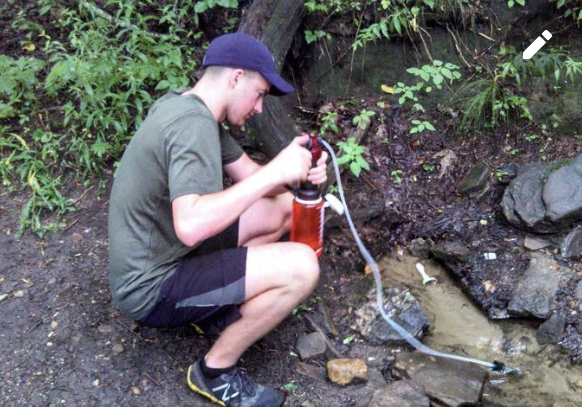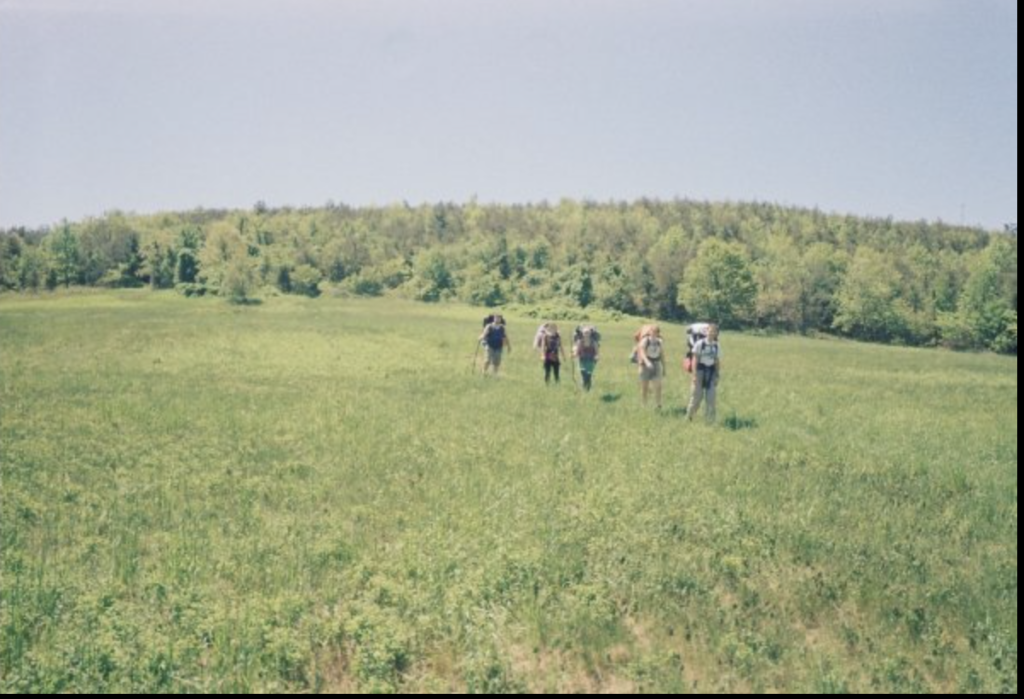Are you thinking of going on your first hiking trip? If so, it’s important to be prepared for the challenges and potential dangers of the outdoors. Here are 10 hiking safety tips for beginners to help you stay safe while out enjoying your adventure!
Tips For Hiking Safely
1) Do your research before you go
Use sites like HikingUpward for east coast hiking or AllTrails to figure out the turn by turn for the trail you’re going on. Also know how to get to the trailhead. You should even download the maps/directions from Google because there’s a chance of you losing service on the way out there.
Determine how much food and water you need to carry. Are there places along the way to fill up on water or maybe convenience stores to stock up on food? Know what the weather is going to be, whether it’s gonna be hot, sunny, freezing cold, wet, overcast, etc, etc. You get the point.
Knowing all of these details will help you with the next tip.
2) Pack the essentials
Including plenty of water, food, a first-aid kit, and appropriate clothing for the conditions. Going back to water, if there are places to fill up on water, be sure to carry a water filtering system.

Maybe an MSR or Sawyer pump, or water purification tables like Aquatabs. I found my MSR to be too slow, so I switched over to the Sawyer system. Much faster, but they might not last as long as expected. I had one last 5 years, while others only a year or so. Just be sure to regularly clean and backwash the unit.
Researching the weather ahead of time will give you more of an idea what is considered to be appropriate clothing. Think about camp or overnight clothes as well, if you are indeed staying the night. I always bring a jacket, most of the time, it’s my trusty North Face quarter zip fleece. I’ll use it at camp once the sun goes down, but it also doubles as a stuff-sack pillow for sleeping.
3) Let Someone Know The Details
Let someone know where you’re going and when you expect to return. I also send my dad texts with this information. Although he’s about an 1hr 30mins from my location, he’ll be able to pass this information along to the necessary parties should the need arise.
Sometimes I’ll leave my hiking details/plan written down out of sight in my car but easy to find. Again, in case something does happen, a party could use these details during their search.
4) Start Hiking Early
Start hiking early in the day to avoid being caught out in the dark. But even if you do, it’s not the end of the world. You should always carry a headlamp just in case this does happen to you though.
A smartphone Flash could work in short term situations, but be careful not to waste the batteries in case of an emergency. Also by starting early in the day you may be able to avoid or lessen hiking during the hottest temperatures in the summer.
5) Stay On Established Trails
Stay on established trails and obey any posted signs. Hiking off trail is an easy way to get lost. If you did the research ahead of time, be sure to carry the trail names and directions with you.
Or use an app like AllTrails to help instead of writing things down. This will help you not venture down any unwanted trails.
Be sure to remember the trail color marking (or blaze) your trail uses because it can vary. But for example, on the Appalachian Trail, it’s a small thin vertical white block/line. And if you’re hiking the Appalachian Trail and come across or find yourself on a blue blaze (marker), that’s mostly a trail that leads to water. An offshoot of the main trail, so it’s likely best as an out and back.
6) Be Aware Of Your Surroundings
Be aware of your surroundings and watch for potential hazards. Cliffs, holes, snakes, baby black bears with momma bear likely nearby. There are definitely a few possibilities of hazards while out hiking. Just be mindful and use common sense.
Don’t try to get closer to the cub and take a picture. Keep moving along the trail if you’re able to. If you want to read further into what to do if you encounter a black bear read here.
7) Consider Carrying A Hiking GPS Unit
Consider carrying a hiking GPS unit or personal locator beacon. Garmin and SPOT are popular brands in this space. Press a button to call for help. Some even have emergency texting services available.
8) Check Your Cellphone Coverage
Make sure you have adequate cell phone coverage in case of an emergency. This one might be challenging because it’s not always the case, but certain peaks or mountain sides might get better service than others, if any.
I like to put my smartphone in airplane mode to save battery in case of emergency. Sometimes I’ll do that, as well as turn it off, but that just depends on if I think I’ll be taking pictures with it.
9) Know Your Limits
Know your limits and hike within your skill level. If you’ve never hiked before and/or are not used to hiking long distances. Don’t go hiking an Intermediate 20mile loop with a few rock scrambles in one day.
If anything, break it up into 2 or even 3 days if can. Spread the mileage out until you know what you’re capable of.
10) Try Not To Hike Alone
Try not to hike alone as a beginner, but if you do, be sure to heed all these above tips. Maybe start off with a friend or two, than jump to solo hiking once you get comfortable with it.

That’s what I did when I first started. Went out with a buddy, they helped show me what to do, how to do it, and what to expect. After a few trips I started doing weekend trips on my own. Then eventually spent about 20 days on the Appalachian Trail solo. That was quite an experience!
Wrapping Up
Hopefully these hiking safety tips for beginners help you out the next time you go for a hike. Remember to have fun, take plenty of pictures, create new memories, and most importantly be safe! Enjoy!
